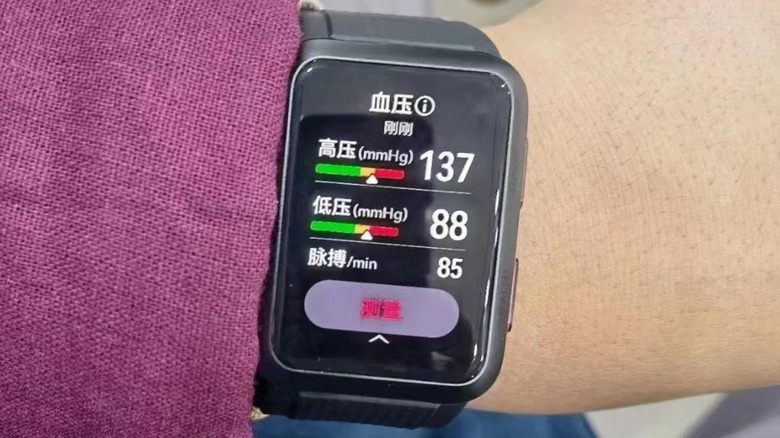Huawei's Next Smartwatch Leak Seems Too Good To Be True
Although it took a while, smartwatches are finally becoming more advanced and are finding their true calling. While the basic hardware specs remain mostly the same, these wearables have started sporting more and more sensors related to health. Going beyond the usual activity tracking and heart rate monitoring, some smartwatches have incorporated features like SpO2 and ECG measuring for blood oxygen levels and heart rhythm, respectively. There is, however, one biometric that has eluded smartwatch makers so far, and Huawei might be the one that calls dibs on putting a true blood pressure monitor in its next wearable.
To be clear, this Huawei Watch D wouldn't be the first to claim a blood pressure measuring feature if it did come out with one. Samsung's Galaxy Watch Active 2 and Galaxy Watch 3 already advertise this feature, but it goes about it in a rather roundabout and indirect way. In a nutshell, it uses other signs to make an estimate of your blood pressure which is then compared to a reference measurement that was taken with a regular BP monitor.
The problem that has stumped smartwatch makers and even medical device manufacturers is the current hard requirement for accurately measuring blood pressure. That involves temporarily stopping blood flow, which is induced by inflating a cuff that is wrapped around your arm or wrist. That kind of cuff is, of course, unsightly and inconvenient on smartwatches, making it almost impossible to get true blood pressure measurements.
That is why rumors about this Huawei Watch D are intriguing because they claim that Huawei has managed to pull a rabbit out of its hat. Hands-on images on Weibo of this alleged smartwatch highlight this particular feature. It is even claimed to be relatively accurate.

The smartwatch's design might have the clue to this trick, though we definitely can't see the strap to confirm. The display is more rectangular than most smartwatches, and its strap looks unconventional as well. If Huawei really did manage to accomplish what even Samsung and Apple have so far failed to do, it could have a winning smartwatch in its hands.
Unfortunately, it might not matter much to many consumers outside of China, especially in the US. Such features will require regulatory approval from each and every market where the feature will be enabled. The US, of course, will block any attempt by Huawei to have its products in the country, which sadly makes it a deal-breaker if it does end up having the world's first smartwatch BP monitor.
